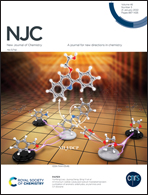Application of site-identification by ligand competitive saturation in computer-aided drug design
Abstract
Site Identification by Ligand Competitive Saturation (SILCS) is a molecular simulation approach that uses diverse small solutes in aqueous solution to obtain functional group affinity patterns of a protein or other macromolecule. This involves employing a combined Grand Canonical Monte Carlo (GCMC)-molecular dynamics (MD) method to sample the full 3D space of the protein, including deep binding pockets and interior cavities from which functional group free energy maps (FragMaps) are obtained. The information content in the maps, which include contributions from protein flexibility and both protein and functional group desolvation contributions, can be used in many aspects of the drug discovery process. These include identification of novel ligand binding pockets, including allosteric sites, pharmacophore modeling, prediction of relative protein–ligand binding affinities for database screening and lead optimization efforts, evaluation of protein–protein interactions and formulation of biologics-based drugs including monoclonal antibodies. The present article summarizes the various tools developed in the context of the SILCS methodology and their utility in computer-aided drug design (CADD) applications, showing how the SILCS toolset can improve the drug-development process on a number of fronts with respect to both accuracy and throughput representing a new avenue of CADD applications.

- This article is part of the themed collection: 2021 Focus and Perspective articles


 Please wait while we load your content...
Please wait while we load your content...